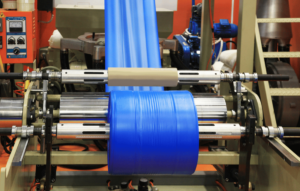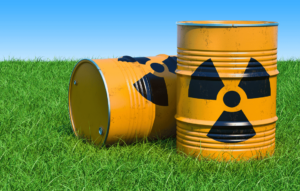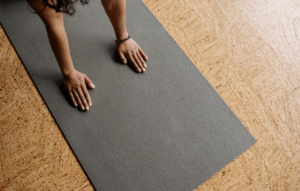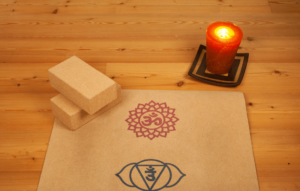In our quest for healthier living, many of us have embraced non-toxic alternatives in our daily routines, from the makeup we wear to the cleaning products we use and the food we consume. But have you ever stopped to consider the safety of your yoga mat? You might assume that this essential tool for relaxation and mindfulness is harmless, but the reality may surprise you. Many yoga mats contain hidden toxins that can easily be absorbed through the skin, posing risks to both our health and the environment.
As we deepen our yoga practice, it’s crucial to understand what we are unwittingly exposing ourselves to. The good news? Identifying whether your mat is toxic is easier than you might think, and switching to a safer alternative is well within reach.
Let’s explore what makes many yoga mats toxic and how you can make a more mindful choice for both your body and the planet.
The PVC Predicament
One of the biggest culprits lurking in many yoga mats today is PVC, or Polyvinyl Chloride. Known for its affordability, durability, and bright colors, PVC is a popular material for yoga mats – but it comes with a hidden cost. Greenpeace has dubbed PVC the “Poison Plastic” because of the serious threats it poses to both human health and the environment. From production to disposal, PVC releases toxic chlorine-based chemicals, contaminating our water, air, and food supply.
material for yoga mats – but it comes with a hidden cost. Greenpeace has dubbed PVC the “Poison Plastic” because of the serious threats it poses to both human health and the environment. From production to disposal, PVC releases toxic chlorine-based chemicals, contaminating our water, air, and food supply.
Research shows that PVC mats can release harmful byproducts like dioxins, which are known carcinogens that can also disrupt the endocrine system – the body’s critical hormone regulator. This means that practicing on a PVC mat could potentially expose you to chemicals that may increase your risk of cancer and interfere with hormonal balance. But the dangers of PVC don’t end there. It’s also one of the most difficult plastics to recycle, and when it ends up in landfills or is burned, it releases even more toxic pollutants, contributing to climate change and environmental degradation.
potentially expose you to chemicals that may increase your risk of cancer and interfere with hormonal balance. But the dangers of PVC don’t end there. It’s also one of the most difficult plastics to recycle, and when it ends up in landfills or is burned, it releases even more toxic pollutants, contributing to climate change and environmental degradation.
PVC is far from the ideal material for a yoga mat meant to promote health and tranquility. Unfortunately, it’s not the only type of plastic you need to be wary of when selecting a mat for your practice.
Other Plastics to Watch Out For
PVC is, unfortunately not the only plastic villain lurking in yoga studios. Many other materials commonly used in yoga mats, like Polyethylene Terephthalate (PET), Ethylene-Vinyl Acetate (PEVA/EVA), and Polypropylene (PP), come with their own set of concerns. While these plastics are often considered less harmful than PVC, they are not completely free from toxins.
Mats made from PET, for instance, can still release small amounts of harmful substances, especially when exposed to heat and sweat during intense yoga sessions. PEVA/EVA, often used as a more eco-friendly alternative, can emit volatile organic compounds (VOCs) that contribute to indoor air pollution, making it not as “safe” of an alternative to PVC as it is often marketed to be. Polypropylene, though relatively stable, is not biodegradable and can add to the growing problem of plastic waste.

Each of these materials poses its own unique risks, from chemical exposure during use to long-term environmental damage. If you’re a yogi who values both personal well-being and ecological sustainability, it’s crucial to understand these hidden issues and consider safer, more natural options for our practice.
Identifying a Toxic Yoga Mat
So, how can you determine if your yoga mat is harboring some of these hidden toxins? The first step is to check the materials used in its production. Most reputable brands will list the material composition on their websites. If you can’t find this information easily, don’t hesitate to reach out directly to the company and ask. A quick email inquiry can provide clarity and help you make a more informed decision.
If you don’t know where you got a mat from or for those received as gifts, a few visual clues can help you identify a potentially toxic mat. Bright, vibrant colors and low prices are often giveaways for the use of synthetic materials like PVC. Also, look for plastic recycling symbols on the packaging or tags, which can indicate the presence of plastic compounds.
If your mat feels overly sticky or has a strong, unpleasant odor, this could also signal the use of toxic materials. While not always definitive, these characteristics often point to the presence of harmful chemicals. By being aware of these signs, you can take proactive steps to avoid toxic exposure and prioritize your health and safety.
Choosing Safer Alternatives
Transitioning to a non-toxic yoga mat is a simple but pretty powerful step toward safeguarding your health and the environment, particularly if you or your loved ones practice regularly. With yoga being such an intimate practice, where some of the most absorbent parts of your skin are often in direct contact with your mat, opting for materials that are free from harmful chemicals can make a significant difference in your health over the years. Fortunately, there are several healthier options available that align with both your practice and your values.
Consider mats made from natural materials like organic cotton, natural rubber, cork, or jute. These materials are biodegradable, sustainable, and free from harmful chemicals. For example, organic cotton yoga rugs provide a traditional, eco-friendly surface that is soft, breathable, and supportive. Natural rubber mats offer excellent grip and cushioning without the toxins, while cork mats are naturally antimicrobial and durable.

Making the switch not only benefits your personal health but also contributes to a cleaner planet. By choosing non-toxic alternatives, you are supporting sustainable practices and reducing the demand for harmful plastics. As you flow, stretch, and breathe deeply, you can feel good knowing your mat is as nurturing to the Earth as it is to you.
Top Brands to Consider
When looking for a non-toxic yoga mat, it’s crucial to choose brands that prioritize both your health and the environment. Fortunately, many companies are now offering mats made from sustainable, natural materials without the harmful chemicals found in conventional options. Here are some trusted brands to consider:
-
- Manduka: Known for their durable, high-quality mats, Manduka offers the eKO series, which is made from natural tree rubber, free from toxic chemicals, dyes, and PVC. These mats provide excellent grip and support while being environmentally friendly.
-
- Jade Yoga: Jade Yoga mats are crafted from natural rubber tapped from rubber trees, making them free of PVC, EVA, and other synthetic materials. They are also slip-resistant and offer great cushioning. Plus, for every mat sold, Jade Yoga plants a tree, contributing to reforestation efforts.
-
- Liforme: Liforme mats are made from eco-friendly natural rubber and non-toxic materials, including water-based inks. They are biodegradable and provide excellent grip, making them a popular choice for yogis who value sustainability and performance.
-
- PrAna: PrAna offers eco-conscious yoga mats made from natural rubber and jute, combining sustainability with functionality. Their mats are designed to be slip-resistant and provide excellent support, making them a great choice for a non-toxic yoga practice.
-
- Öko Living: Specializing in traditional yoga rugs, Öko Living offers organic cotton yoga rugs that are naturally dyed and handwoven. These mats are breathable, biodegradable, and free from harmful chemicals, providing a safe and eco-friendly option for your practice.
Choosing the Right Mat for You
There are a few different options out there when selecting a non-toxic yoga mat; be sure to consider your specific needs – whether you need extra cushioning for joint support, a lightweight option for travel, or a mat that offers superior grip for hot yoga. By choosing from these reputable brands above, you can find a mat that suits your practice while supporting your commitment to health and sustainability.
Closing Thoughts
As we continue our journey towards healthier living, it’s essential to remember that every choice we make has an impact – not just on our own well-being, but also on the world around us. Your yoga mat, a seemingly simple accessory, offers a choice to either contribute to a cycle of toxicity or help create a cleaner, safer environment. By becoming more aware of the materials in our mats and opting for non-toxic alternatives, we take a meaningful step toward a more mindful and eco-friendly yoga practice.

So, next time you roll out your mat, consider what you’re practicing on. Choose a mat that supports your health, your practice, and the planet. Share this knowledge with your fellow yogis, and together, let’s create a ripple effect of positive change – one breath, one pose, and one non-toxic mat at a time.








